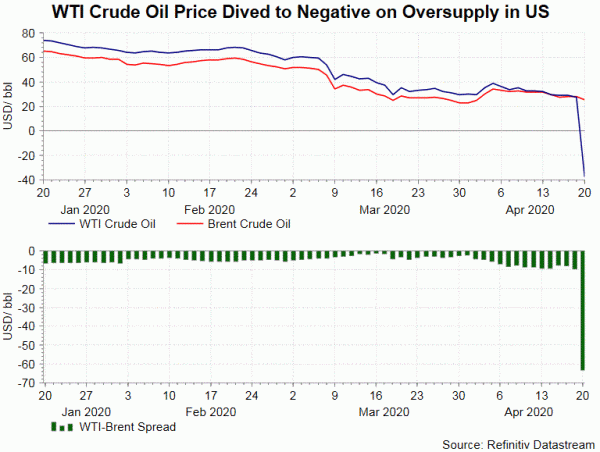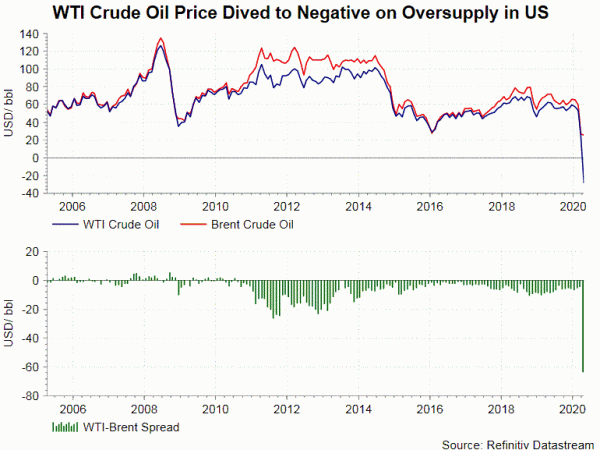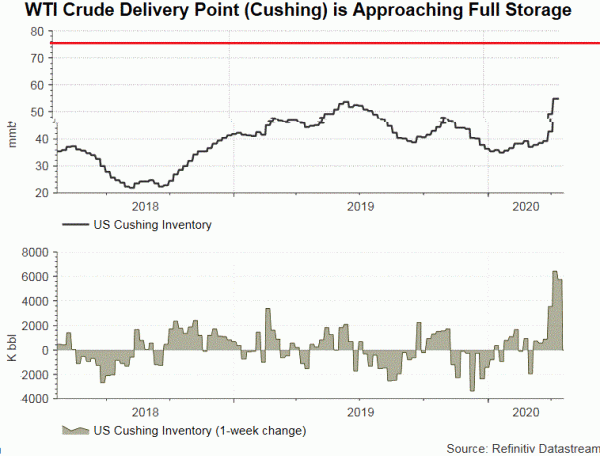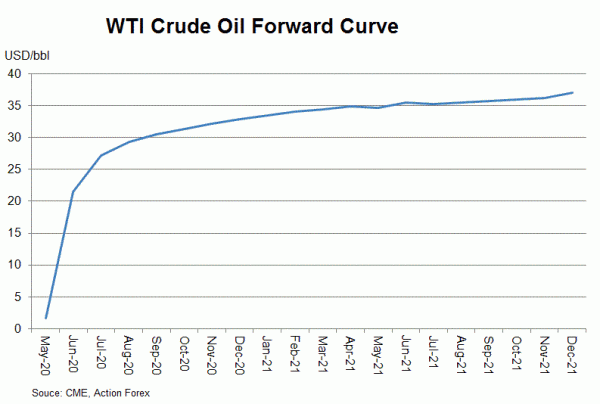A day ahead of expiration, WTI crude oil futures for May delivery slumped into the negative territory for the first time on history. Plunging by over 100%, the May contract slumped to as low as US$ -40.32/bbl before settling at -37.63. In Asian session today, the contract recovered to positive territory and is trading at 1.35 at the time of writing this report.
 Key explanation for this bizarre phenomenon – negative oil price – is the structure of oil futures. As the May WTI contract expires on April 21 (tomorrow). Buyers of the contract will have to take delivery of the product (WTI crude oil). Delivery shall be made by transferring into a designated pipeline or storage facility with access to seller’s incoming pipeline or storage facility. Buyers would have to square the positions before the settlement date if they do not prefer to take care of the storage. Indeed, rapid increase in inventory suggests that the cost of finding storage is high. The delivery point of the WTI crude, Cushing, Oklahoma, holds total storage capacity of 76.09 mmb. EIA’s report shows that Cushing inventory soared to 54.97 mmb in the week ended April 10, translating into utilization rate of 72%. Recent pace of stock-build suggests that the capacity will be completely full by the first week of May.
Key explanation for this bizarre phenomenon – negative oil price – is the structure of oil futures. As the May WTI contract expires on April 21 (tomorrow). Buyers of the contract will have to take delivery of the product (WTI crude oil). Delivery shall be made by transferring into a designated pipeline or storage facility with access to seller’s incoming pipeline or storage facility. Buyers would have to square the positions before the settlement date if they do not prefer to take care of the storage. Indeed, rapid increase in inventory suggests that the cost of finding storage is high. The delivery point of the WTI crude, Cushing, Oklahoma, holds total storage capacity of 76.09 mmb. EIA’s report shows that Cushing inventory soared to 54.97 mmb in the week ended April 10, translating into utilization rate of 72%. Recent pace of stock-build suggests that the capacity will be completely full by the first week of May.
Yet, negative price in May futures does not necessarily translate into negative prices in other petroleum products, such as gasoline and diesel, although both are in downtrend.
The June contract, expiring on May 19, declined -18.38% to settle at 20.43. While price will remain under pressure, whether the contract will plummet into the negative next month is less certain. On the one hand, weak demand and the likelihood that Cushing capacity will be full in early May suggest that storage capacity will tighten further in coming weeks. On the other hand, the phenomenon will force US producers to implement aggressive output cut. Following a meeting last week, the Texas Railroad Commission is set to meet again today in discussion on a mandated output cut in the state. Some suggest that the members might call for a 10% reduction. An announcement like this could have a boost in oil prices. However, timing and execution of the production cut are the key.















